- Places
- Plans
- Itineraries
- Experiences
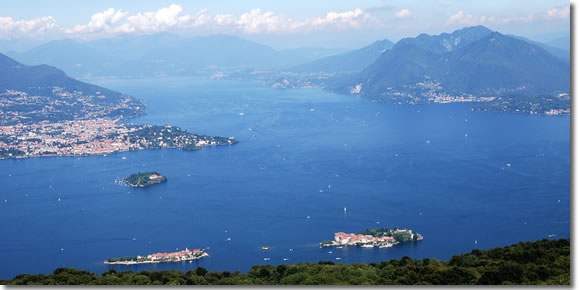
Lake Maggiore. (Photo by Mbdortmund)
Despite its name, Lake Maggiore is, at 121 square kilometers, actually only Italy's second largest lake, after Lake Garda. This westernmost of Italy's great lakes is lined by forested shores and pokes its northern end into Switzerland but most of its length it in Italy, straddling the border between Lombardy to the east and Piemonte to the west.
Lake Maggiore's popularity as a resort began in 1800 when Napoleon's Simplon highway from Geneva to Milan skirted its shores and Europeans from far and wide discovered its mild climate perfect for building villas and gardens, turning its fishing villages into holiday retreats.
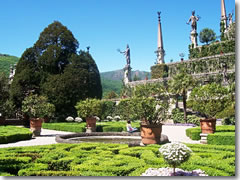
The gardens at Isola Bella.It became a renowned European pleasure ground, its deep, moody waters backed by the Alps inspiring great minds like Flaubert, Wagner, Goethe, and most notably Ernest Hemingway, who set part of A Farewell to Arms in Stresa (a novel based very closely on his own World War I experiences).
Maggiore's most spectacular sights are a legacy of the powerful Borromeo family, who have ruled southern half of the lake as a family fiefdom since the 15th century... » more
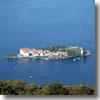 Isola Bella - "The Beautiful Island," a terraced pyramid of gardens around a whimsical little pleasure palace packed with paintings, tapestries, elaborately decorated rooms, and World War II memories... » more
Isola Bella - "The Beautiful Island," a terraced pyramid of gardens around a whimsical little pleasure palace packed with paintings, tapestries, elaborately decorated rooms, and World War II memories... » more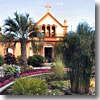 Isola Madre - "The Mother Island," a lovely botanic gardens strutting with peacocks and other exotic birds around an historic villa with quirky collections... » more
Isola Madre - "The Mother Island," a lovely botanic gardens strutting with peacocks and other exotic birds around an historic villa with quirky collections... » more 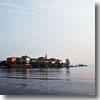 Isola Superiore - More poetically called Isola dei Pescatori ("The Isle of the Fishermen"), the lived-in island has a pair of hotels (Hotel Verbano is the best) and some restaurants and souvenir shops... » more
Isola Superiore - More poetically called Isola dei Pescatori ("The Isle of the Fishermen"), the lived-in island has a pair of hotels (Hotel Verbano is the best) and some restaurants and souvenir shops... » more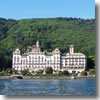 Stresa - A classic Grand Tour resort town and perfect base for exploring the lake (especially the Borromean Islands)...» more
Stresa - A classic Grand Tour resort town and perfect base for exploring the lake (especially the Borromean Islands)...» more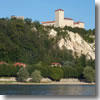 Rocca Borromeo di Angera - A modest but picture-perfect Borromeo castle in a spectacular setting...» more
Rocca Borromeo di Angera - A modest but picture-perfect Borromeo castle in a spectacular setting...» more
 Arona - A small town dominated—literally—by St. Charles Borromeo in the form of a 76-foot-tall statue of the sain in bronze that you can climb...
» more
Arona - A small town dominated—literally—by St. Charles Borromeo in the form of a 76-foot-tall statue of the sain in bronze that you can climb...
» more
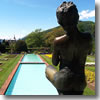 Villa Taranto - This 19th-century villa in Verbania on the western shore has the most extensive gardens on all of Lake Maggiore...
» more
Villa Taranto - This 19th-century villa in Verbania on the western shore has the most extensive gardens on all of Lake Maggiore...
» more
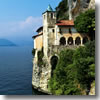 Santa Caterina del Sasso - This monastery clinging to the cliffside was built in thanks for surviving a raging storm in the 13th century and still contain a ruinous riot of frescoes inside...
» more
Santa Caterina del Sasso - This monastery clinging to the cliffside was built in thanks for surviving a raging storm in the 13th century and still contain a ruinous riot of frescoes inside...
» more
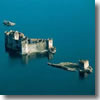 Cànnero Riviera - A set of tiny islet castles off the shores of a sleepy lakeside town became the homebase for a clan of bloody 15th century pirates marauding across the high, er, lakes...
» more
Cànnero Riviera - A set of tiny islet castles off the shores of a sleepy lakeside town became the homebase for a clan of bloody 15th century pirates marauding across the high, er, lakes...
» more
Lake Maggiore tourist info:
There are tourist offices on Lake Maggiore in:
Take a tour: If you'd prefer to take a day trip of Lake Maggiore and the Borromean Islands from Milan with an expert guide, consider booking one through our partners at Viator.com:
In 1395, the Borromeo family fled political intrigue in Tuscany for Milan, where they bankrolled the rise of the Visconti to power. Building a pan-European financial empire, the family bought itself the Arona fiefdom in 1447.
They tacked skillfully in the era's turbulent political winds, married wisely, and hitched their stars to the Sforza (on the gates as Isola Bella, look for a symbol of three circles representing the interlocking fortunes of the Borromei, Visconti, and Sforza dynasties) while they slowly acquired control over more and more of Lake Maggiore.
Prize parcels of this lakeside land has stayed in family hands to this day (the modern Borromei princely family is very much alive and well), and their legacy—and continued munificence in sharing the family patrimony—make up some of the lake's greatest sights.
They left a colossal statue of their family saint, San Carlo Borromeo, outside Arona, and a castle in Angera, but most notable are the Borromeo gardens and villas on Isola Bella and Isola Madre, two of the "Borromean Islands" off the shores of the resort town of Stresa that together comprise Lake Maggiore's most significant (and photogenic) sight.How to get to Lake Maggiore: A car is the best bet, but there are also at least hourly trains up from Milan that service the major towns on the southern half of the Lake Maggiore's west shore: Arona (60–75 min.), Verbania (75–100 min.), Stresa (52–90 min.).
Note that the fastest trains leave from Milan's central station, but there is more frequent (and only slightly slower) service from Milan's Porta Garibaldi station.
There are also eight trains daily from Torino (Turin) to Arona (2–3 hours; most change in Santhia or Novara).
The east shore of Lake Maggiore is best reached (and explored) by car.
If you don't have a rental car (which is the recommended method), the easiest way is actually by boat.
There is an extensive ferry system (www.navigazionelaghi.it) that connects even the smallest towns and stops along both shores of the lake. However, in winter this is reduced to just local ferries (one that only crosses between Arona and Angera; another that only tools around the central lake between Stresa, the islands, and Verbania/Intra, etc.) but doesn't connect these localized lake regions
The is also a regular bus service along Lake Maggiore's western shore between Arona, Stresa, and Verbania operated by S.A.F., tel. +39-0323-552-172, www.safduemila.com), but it runs less frequently (and services fewer places) than do the lake ferries.
Finally, you can take a train up the west shore of the lake past Arona and Stresa as far as Verbania (at which point the rail lines leave the lakeside to turn northwest toward Switzerland).
The northern fifth or so of the lake is actually in Switzerland. The towns on that side of the border are a bit more disappointingly staid, modern, and, well Swiss than their Italian neighbors—though if you're a fan of the artistic Arp clan (Jan, Hans, and Margherita), there's collection of their works in the modern art gallery of Casa Rusca, in Locarno, the main city of the Swiss end of Lake Maggiore.
Share this page
Search ReidsItaly.com
For more info:
www.distrettolaghi.it
www.stresaturismo.it
www.comune.stresa.vb.it
East shore:
www.vareselandoftourism.it
Also useful:
www.borromeoturismo.it
www.illagomaggiore.com
One-day tour (from Viator.com)
Lake Maggiore Day Trip from Milan